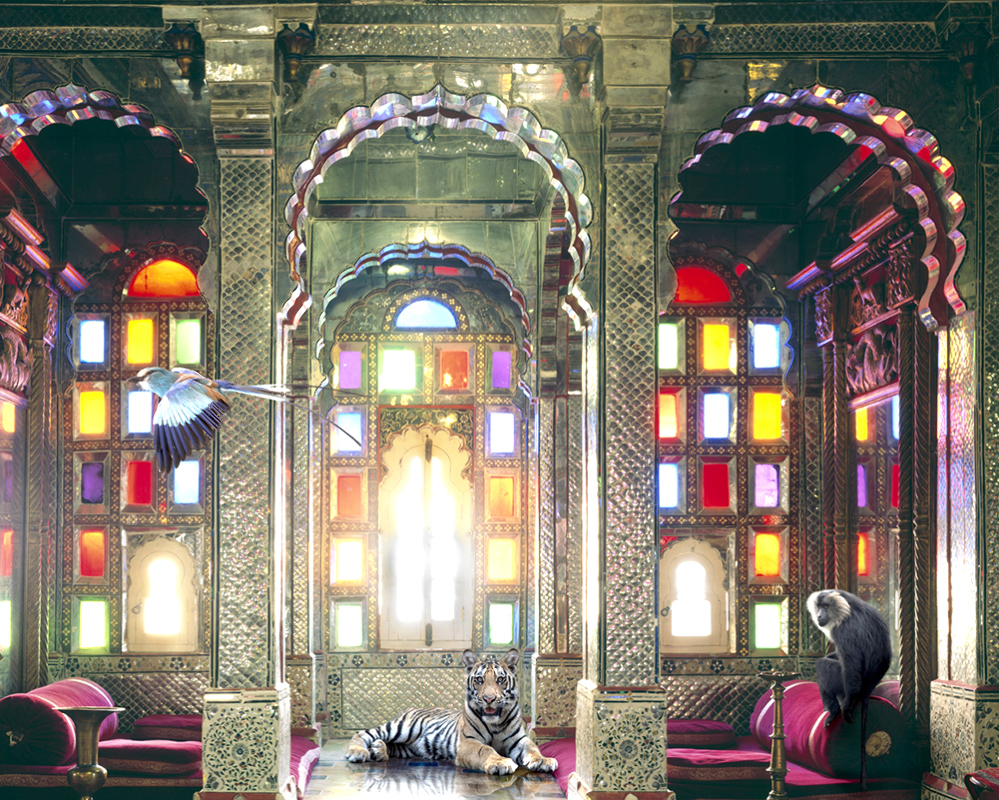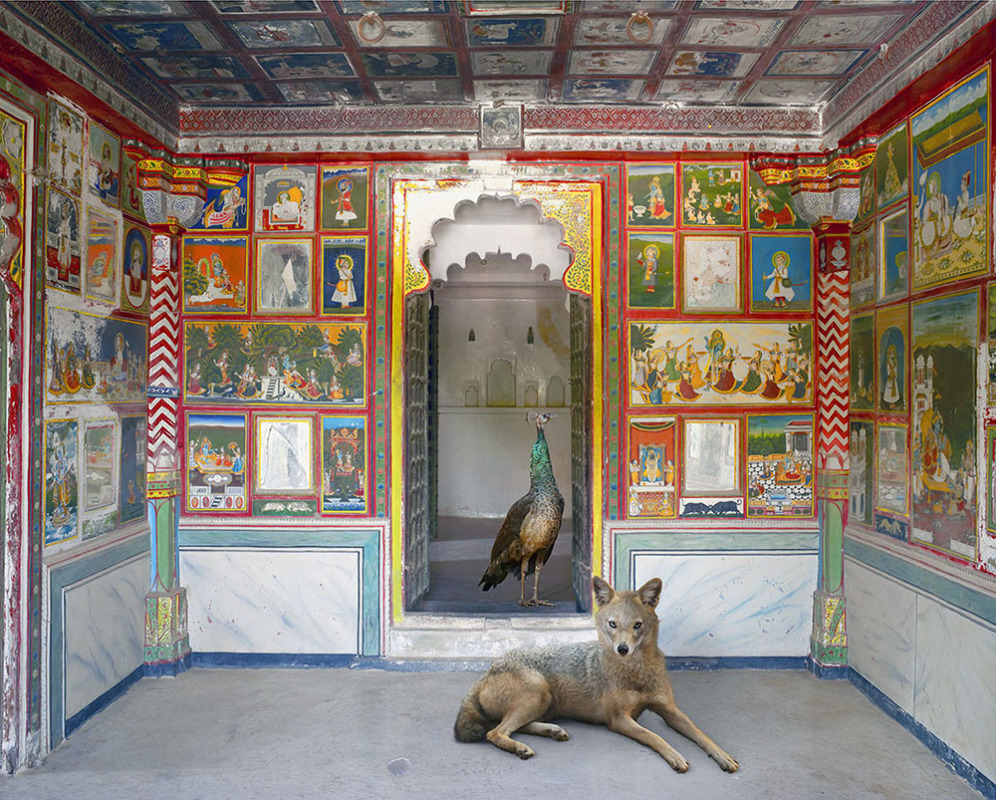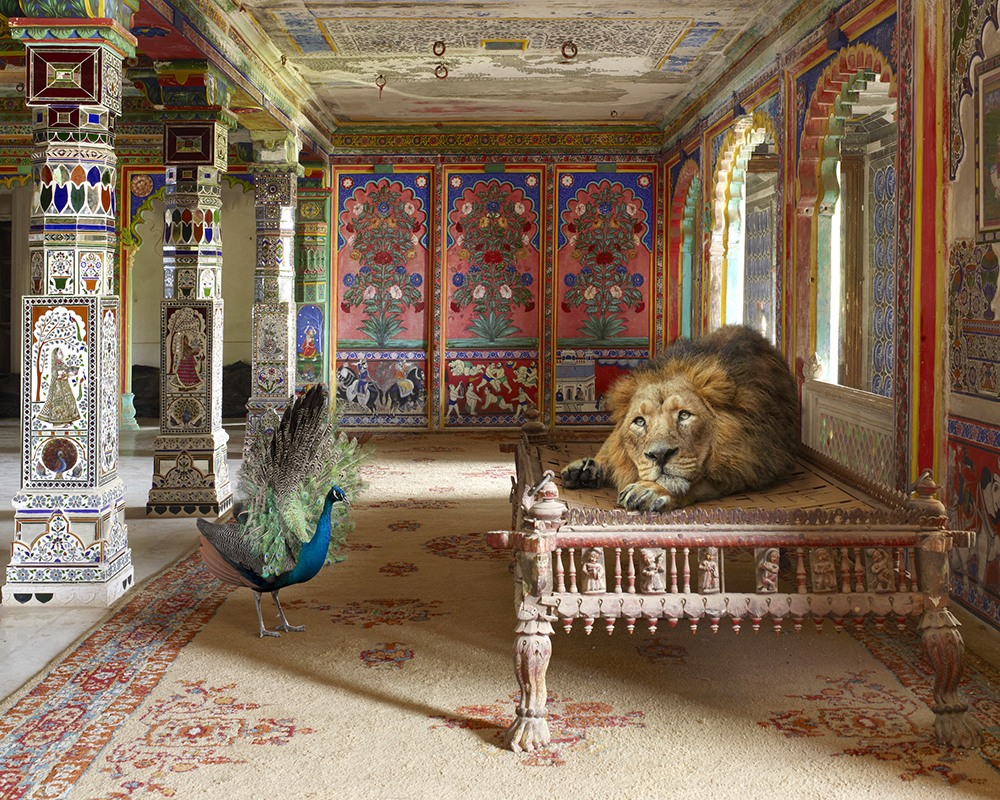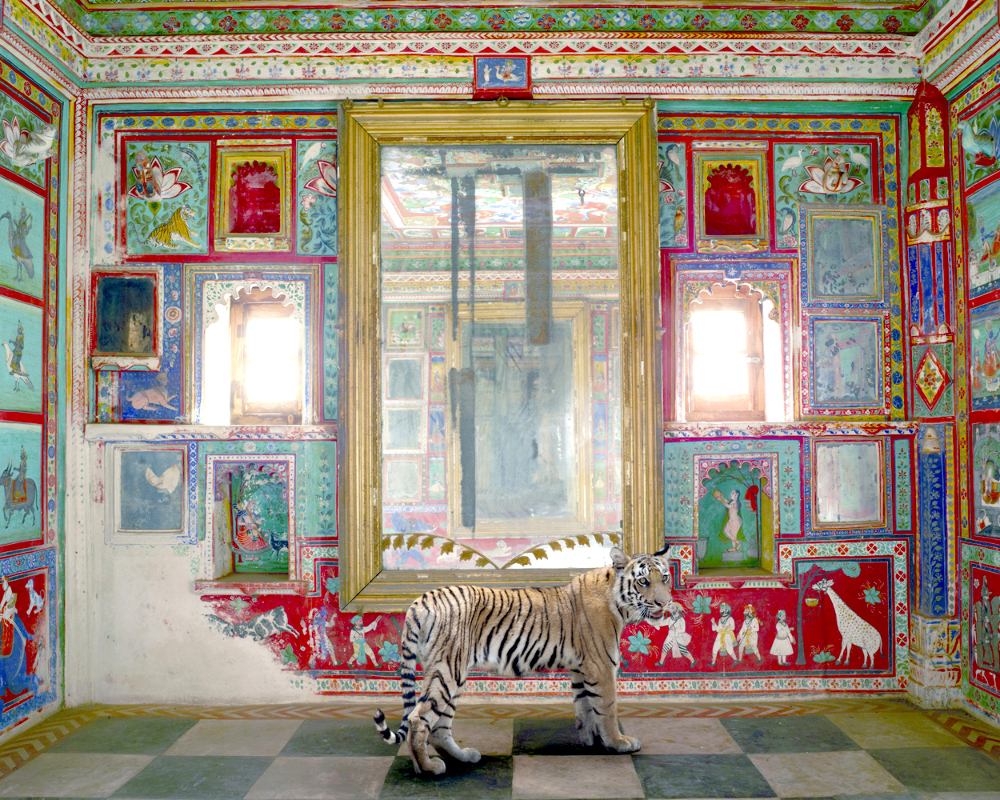India Song
-
PhotographerKaren Knorr, United Kingdom
-
StudioKaren Knorr Ltd.
-
Website
-
Instagram
India continues to develop at a rapid pace . I first traveled there
first in 2008 travelling 2000 kilometres across Rajasthan. I have
travelled there many times since and have witnessed changes
that have saddened me such as concerning LGBT communities
and further division between hindus and muslims stoked by
sectarian politics.
What appealed to me was the hybridity and tolerance expressed
in Rajput and Mughal architecture that I encountered in the
north and the extraordinary sacred architecture of the Jains,
Muslims, Jews and Hindus intermingling . It is true that India
absorbs cultures
In India I am a participant observer, collaborator of what is an
upper caste culture that is opening up and liberalizing in terms
of women’s position yet there is still much work to be done for
women’s rights in India as across the globe. This a feminist
view and one choosing to celebrate the beauty of India rather
than point to the obvious inequality. I have formed bonds and
made friends . I continue to return and make work exploring a
way of reconfiguring travel , wildlife and architectural
photography forming a new hybrid form of photography
collaging through photoshop animals and interiors of palaces
and temples.
India Song pays homage to the extraordinary beauty and power
of Rajput and Mughal architecture and the hybrid cultures
represented in stories that are written and represented in
miniature paintings, sculptures found in temples, palaces,
havelis and mausoleums, and also folk and tribal art. The work
is inspired by the ideas of power that underlie cultural heritage
.The series celebrates the rich visual culture evident in the
myths and stories of northern India such as the Ramayana using
sacred and secular sites to highlight caste,femininity and its
relationship with the animal world. The work considers men’s
space(mardana)and women’s space (zanana) in Mughal and
Rajput architecture such as palaces, havelis or mausoleums.
These interiors are photographed with a large format analogue
and digital cameras. Live animals are inserted into the
architectural sites creating an imaginary scene based on
observation of animals in India that live in close proximity to
humans.
The animals photographed in sanctuaries, zoos and cities,
inhabit heritage spaces interrogating Indian cultural heritage
and the rigid hierarchies of caste. Cranes, zebus, langurs, tigers
and elephants mutate from princely pets to avatars of past
feminine historic characters, blurring boundaries between reality
and illusion and reinventing the Panchatantra for the 21st
century.
Karen Knorr, an American was born in Frankfurt am Main , Germany and was raised in San Juan Puerto Rico in the 1960s. She finished her education in Paris and London . Karen has taught, and lectured internationally including The University of Westminster,
Goldsmiths College, Harvard and The Art Institute of Chicago. Her photography addressed the critical debates concerning the "politics of representation" practices which emerged during the late 1970's and early 1980's.
More recently in her series India Song she has been exploring cultural heritage and it relation to wildlife.
Awards National Endowment for the Arts 1986
Pilar Citoler International Photography Prize 2011
National Arts Prize UK 2017
Ooshot Award 2018




